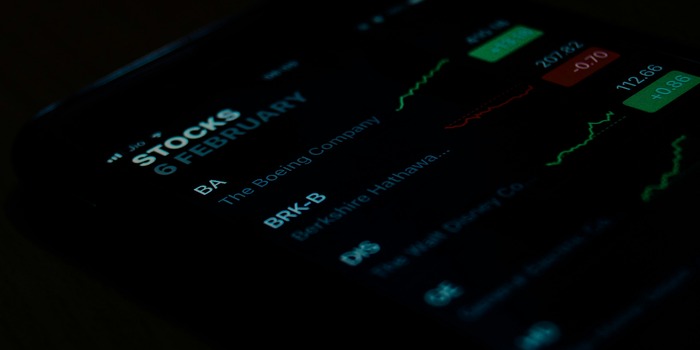All You Should Know About Not Knowing About Your Stock's Basis Costs
Feb 11, 2024 By Susan Kelly
Purchasing low and then trading high is a fundamental principle of stock investing. Knowing the cost basis of the stocks you buy will help you calculate your potential profit should you sell. If you report capital gains or losses to the government, you should also know the cost basis.
However, there are several ways to determine the cost basis of old stock if you're unsure of the actual amount you purchased. What you should know is as follows. Making a financial plan that fits your requirements and objectives can be aided by a financial advisor.
If you are confused about Not knowing your stock's cost basis can cost you, just keep reading!
How Can You Find a Stock's Cost Basis?

If you know, at the time the stock was bought, the following steps:
● Access your brokerage account by logging in.
Your broker may not include your stock cost basis on your 1099-B, but it doesn't imply they don't have it. If the selling agent was your present broker, your online brokerage account typically has lots of helpful documentation, including comprehensive reports on every transaction.
● Examine prior broker statements.
Look over your files to get the trade confirmation from when you purchased the shares. (Saving these is usually a brilliant idea regarding taxes.)
You can have more than one trade confirmation statement if you bought the stock at different periods or didn't sell all the shares simultaneously.
● Communicate with your brokerage company.
If you purchased the shares from your broker, they must have a transaction record.
If so, they might still be ready and able to check the stock price's historical data on your behalf.
● Check about past stock prices online.
Take a look at Marketwatch or Nasdaq's historical section, for instance. To determine a cost, it is generally appropriate to average the lowest and highest price on a given day. Using the closing price on the day of purchase is likewise permissible.
Events that impact basis, such as stock splits, spin-offs, and reinvested dividends, might not be included in these free services.
● Proceed straight to the source.
Historical stock data can be found in the investor relations section of many companies' websites. You can also call the shareholder services division of the business for assistance.
To find the high and low price on the day of purchase for shares bought more than ten years ago, visit a public library or the library at your law school. You can also browse through past issues of newspapers like USA Today.
Why Do Warnings About Missing Cost Basis Happen?

It would help to import all your trades, purchases, sales, and other related transactions from your platforms to use CoinLedger. The application organises all of this data logically and normalises it.
When CoinLedger discovers that you are selling some currency you have no record of ever getting, it identifies a transaction as a Missing Cost Basis (since you still need to include your cost basis for this sale/trade).
➔ Importing information from just one exchange
Assume that this user has only imported his trade history from Gemini into CoinLedger, ignoring all of his other data. In this instance, It will only include information about a 0.5 BTC deposit into the Gemini account and a BTC sell transaction for $20,000 in USD.
Because the user has yet to disclose to our platform how he initially obtained those 0.5 BTC, this would result in a Missing Cost Basis Warning. The user's Gemini wallet has amazingly acquired 0.5 BTC. With the initial Coinbase buy transaction data, the user's actual $10,000 cost basis for his 0.5 BTC will be present.
➔ Importing all data is the solution
CoinLedger will be able to determine that the user paid $10,000 for this 0.5 BTC before selling it on Gemini if the user imports all of his data from Coinbase and Gemini.
With the cost basis from the initial Coinbase purchase applied, CoinLedger can precisely calculate the user's proper capital gain when he sells this Bitcoin on Gemini: $20,000 - $10,000 = $10,000.
Can You Use a Missing Cost Basis in Your Tax Report?

Yes is the answer. Your tax report will still be processed by CoinLedger even if there are Missing Cost Basis Warnings. Missing Cost Basis Warnings usually have little to no effect on your profits or losses. Our technology uses the most cautious method when handling missing data: a zero-cost foundation.
How many Methods of Cost Basis?
→ First-In, First-Out Method
The "first-in, first-out" (FIFO) technique assumes you will sell your oldest shares first. Thus, your brokerage would determine your cost basis using the earliest purchases if you progressively bought 1,000 shares over a few years and then sold 100. Because you typically purchase the shares you've held the longest at the lowest price, using the FIFO technique may result in the most significant gain recognized and the highest tax requirement.
Unless you specify otherwise, Schwab uses the FIFO cost basis technique by default for all investments other than mutual funds.
→ Specific Identification Method
Alternatively, you might select shares with a certain cost basis when you sell using the "specific identification" method. Although it requires a little more work, you will have more significant influence over the taxes you owe. Ten years ago, you paid $10 per share ($5,000 total) for 500 shares of XYZ Corp., plus a $50 brokerage commission, for a total cost of $5,050 ($10.10 per share).
You decide to sell 100 shares after a year when the value of the shares has increased to $100. The table below explains how applying the FIFO technique could yield substantially higher capital gains than specific identification.
Conclusion
This detailed work highlights Not knowing your stock's cost basis can cost you and the importance of comprehending the cost basis of stocks. It enables investors to make wise choices, avoid financial dangers, and accurately handle tax reporting. Remember that knowledge is the key to financial success in the constantly changing world of investments.








